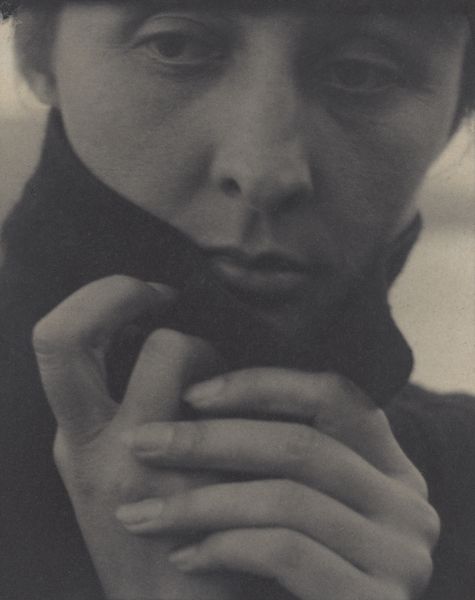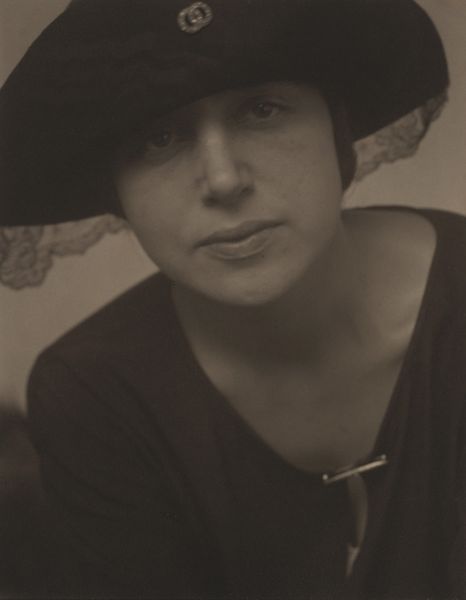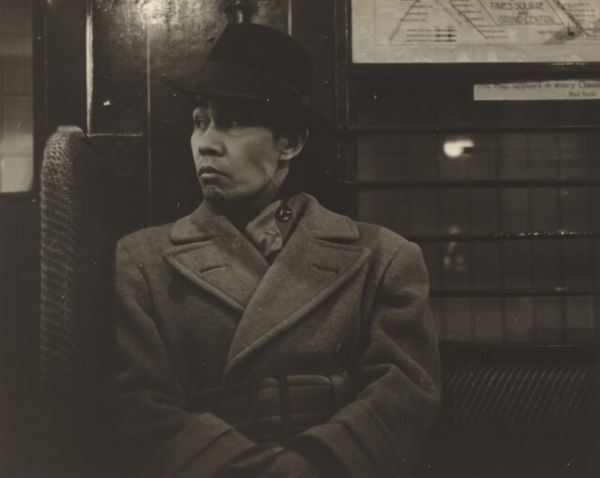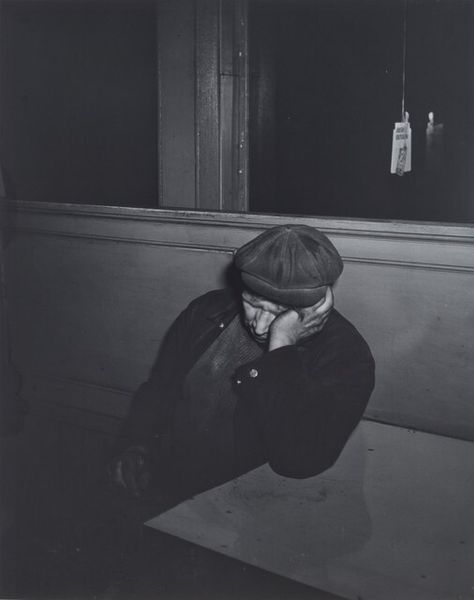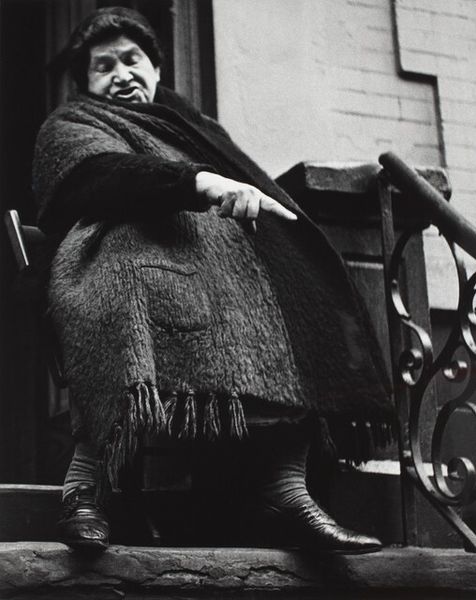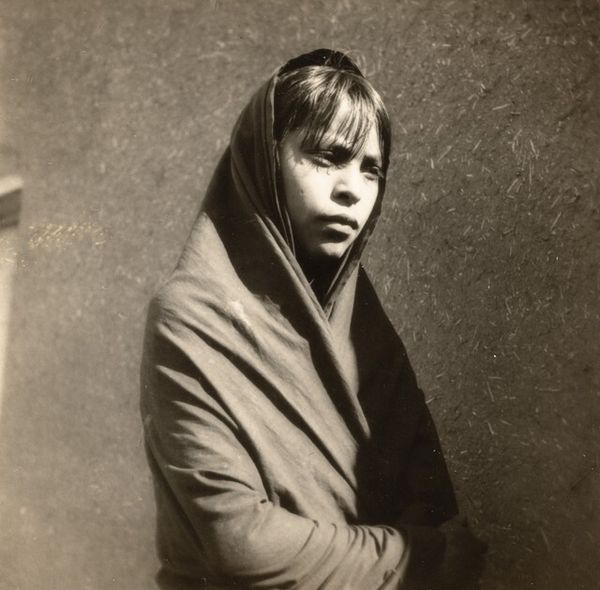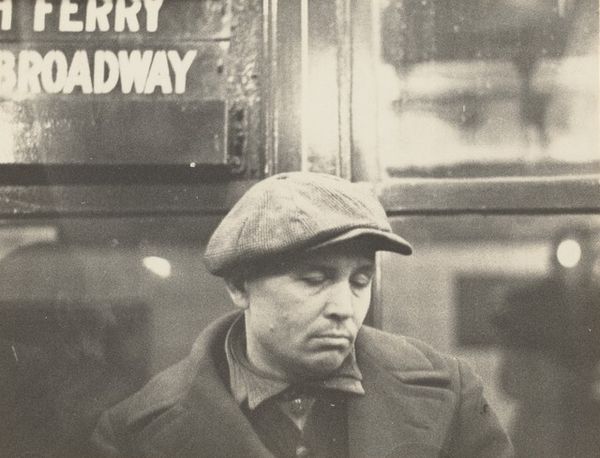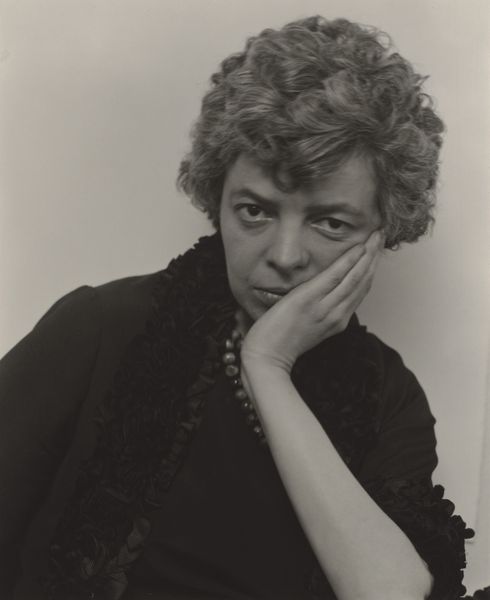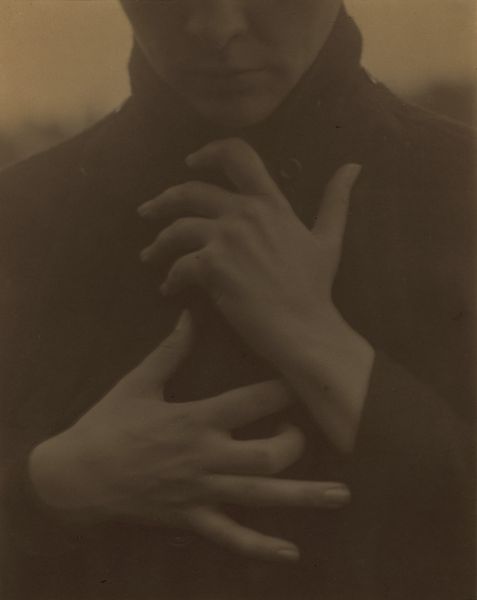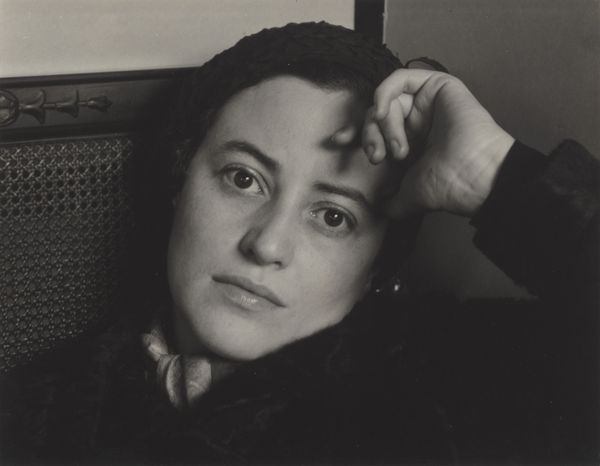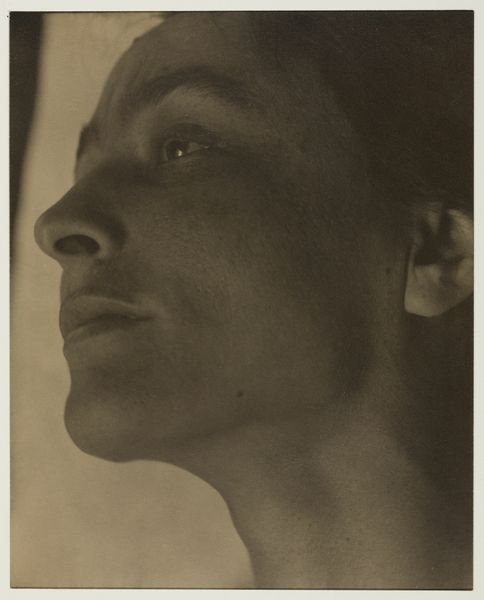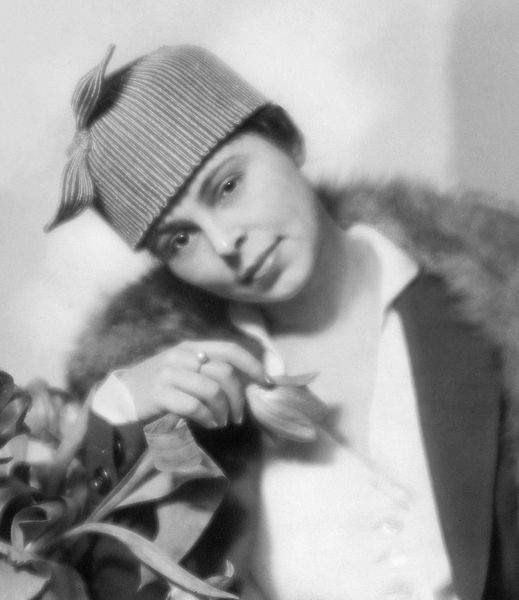
photography, gelatin-silver-print
#
portrait
#
character pose
#
character portrait
#
low key portrait
#
portrait image
#
portrait
#
portrait subject
#
street-photography
#
photography
#
portrait reference
#
portrait head and shoulder
#
single portrait
#
gelatin-silver-print
#
modernism
#
realism
#
celebrity portrait
Dimensions: sheet: 27.6 x 21.5 cm (10 7/8 x 8 7/16 in.)
Copyright: National Gallery of Art: CC0 1.0
Curator: Walker Evans's "Subway Portrait," likely taken between 1938 and 1941, part of his famed project documenting ordinary Americans. Editor: Stark. Striking. I’m immediately drawn to the texture of the gelatin silver print, its contrasts, and the anonymity in the subway car as backdrop. There’s an immediacy I find compelling. Curator: The fascinating element is how he achieved this immediacy. Evans used a hidden camera, a 35mm Contax, concealed beneath his coat. This allowed him to capture unguarded moments of unsuspecting passengers. Editor: The act of concealing shifts the perspective doesn't it? How does this influence our understanding of documentary photography, especially in the socio-political climate of the late 1930s, teetering on the edge of global conflict? Were the working classes fully considered by their image-makers at this point? Curator: It absolutely raises ethical considerations. The subjects, unaware, became symbols. He then showcased these individuals, particularly their faces. Editor: Consider too the economic realities; the Depression loomed large. Public transportation signified not just mobility but survival. Each captured face carried a history of labor, migration, and material constraints. What was the artist's means of working; was he an industrial laborer? Curator: Evans, coming from a more privileged background, entered this space of working-class commutes as an observer, subsidized by projects like those funded by the Farm Security Administration. The silver gelatin process itself—mass-reproducible, democratic—becomes integral. Editor: So, photography here serves both as social document and a produced artifact. I'm curious: to what extent do you think viewers at the time were conscious of this production process, these embedded social stratifications? Curator: It is impossible to know entirely. Evans hoped that this candid approach would reveal something more truthful about the American spirit. Today it invites conversation, a kind of social archeology laid out in striking monochromatic simplicity. Editor: Ultimately, what we encounter isn't just an image but an historical document laden with the socio-economic currents of its time—revealing questions about representation, class, and artistic responsibility. Curator: Exactly. "Subway Portrait" serves as a reminder that a simple, almost surreptitious, photograph holds so many layers. Editor: Layers that deepen upon scrutiny. It leaves me thinking about how labor and image-making have always been intertwined and how photographs mediate between the lives we lead and how society perceives them.
Comments
No comments
Be the first to comment and join the conversation on the ultimate creative platform.
